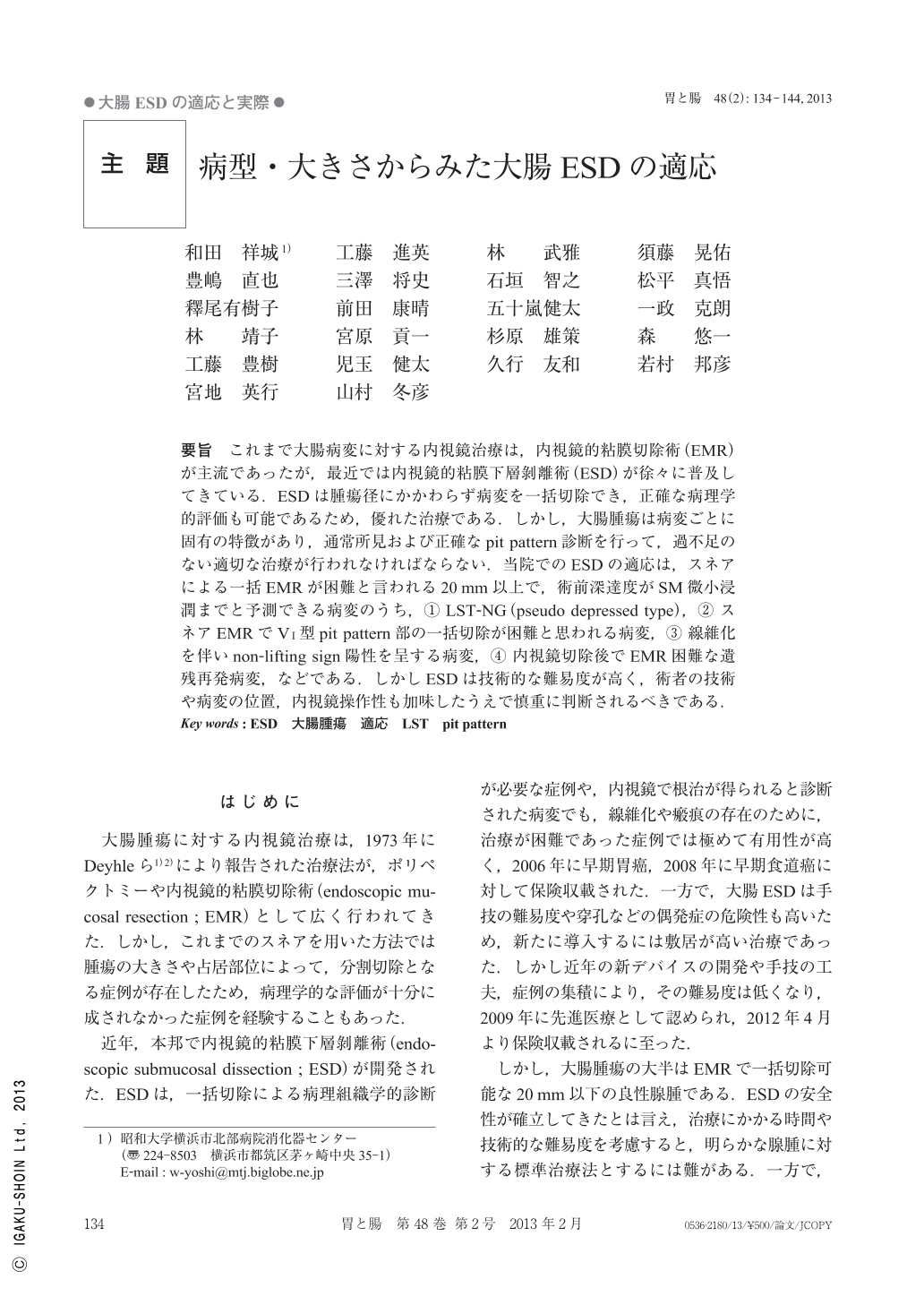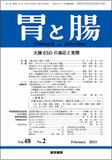Japanese
English
- 有料閲覧
- Abstract 文献概要
- 1ページ目 Look Inside
- 参考文献 Reference
- サイト内被引用 Cited by
要旨 これまで大腸病変に対する内視鏡治療は,内視鏡的粘膜切除術(EMR)が主流であったが,最近では内視鏡的粘膜下層剝離術(ESD)が徐々に普及してきている.ESDは腫瘍径にかかわらず病変を一括切除でき,正確な病理学的評価も可能であるため,優れた治療である.しかし,大腸腫瘍は病変ごとに固有の特徴があり,通常所見および正確なpit pattern診断を行って,過不足のない適切な治療が行われなければならない.当院でのESDの適応は,スネアによる一括EMRが困難と言われる20mm以上で,術前深達度がSM微小浸潤までと予測できる病変のうち,(1)LST-NG(pseudo depressed type),(2)スネアEMRでVi型pit pattern部の一括切除が困難と思われる病変,(3)線維化を伴いnon-lifting sign陽性を呈する病変,(4)内視鏡切除後でEMR困難な遺残再発病変,などである.しかしESDは技術的な難易度が高く,術者の技術や病変の位置,内視鏡操作性も加味したうえで慎重に判断されるべきである.
Colorectal ESD(endoscopic submucosal dissection)has become a common treatment in Japan. It has made possible en bloc resection of colorectal tumors regardless of size but has a relatively higher degree of difficulty. We must evaluate colorectal lesions on growth type, size and pit pattern diagnosis and select an adequate treatment based on the accurate diagnosis. ESD is indicated for the over 20mm colorectal tumors such as ; 1)LST-NG(PD)(pseudo-depressed type)that are difficult to resect en bloc, using a single snare, 2)lesions in which it is difficult to remove the Vi pit pattern area en bloc, using a snare, 3)lesions with fibrosis showing the non-lifting sign, 4)residual lesions or recurrence after endoscopic resection and so on. It is also important to consider the endoscopists'skill level, the characteristics of the lesions and their endoscopic manipulability.

Copyright © 2013, Igaku-Shoin Ltd. All rights reserved.


